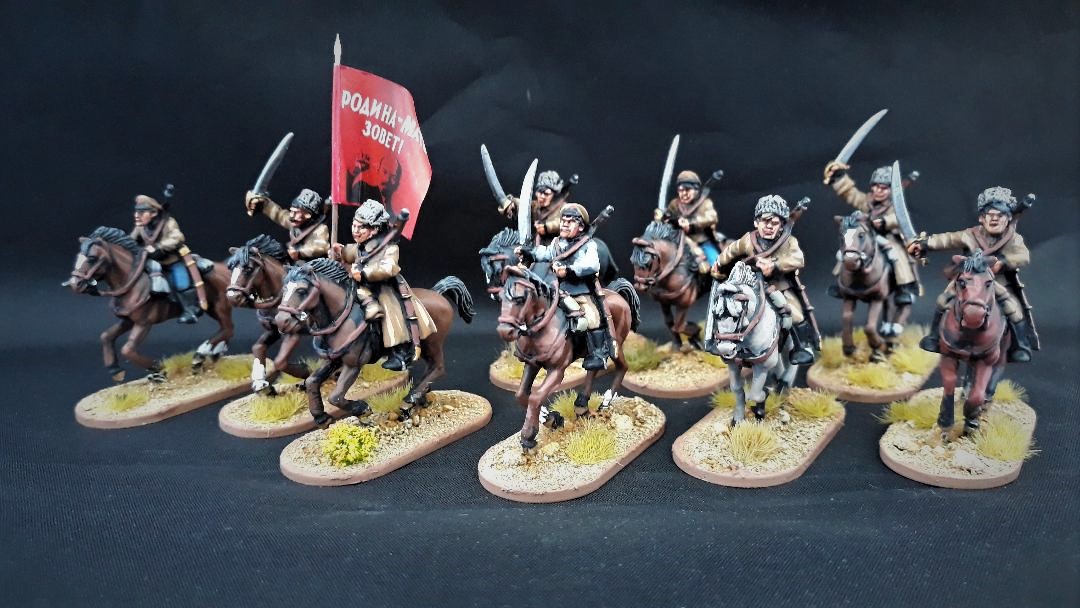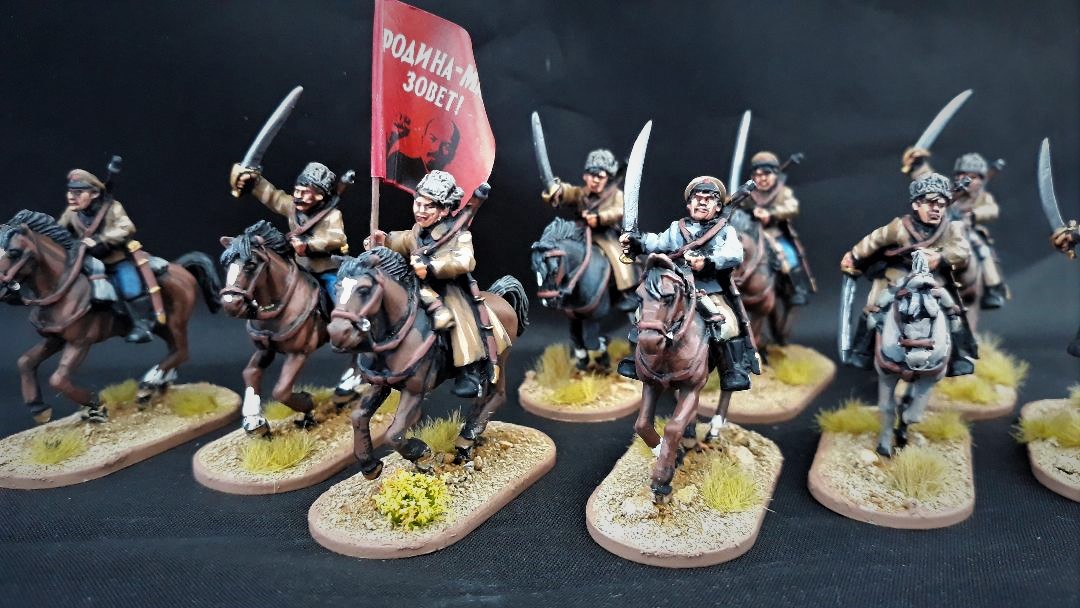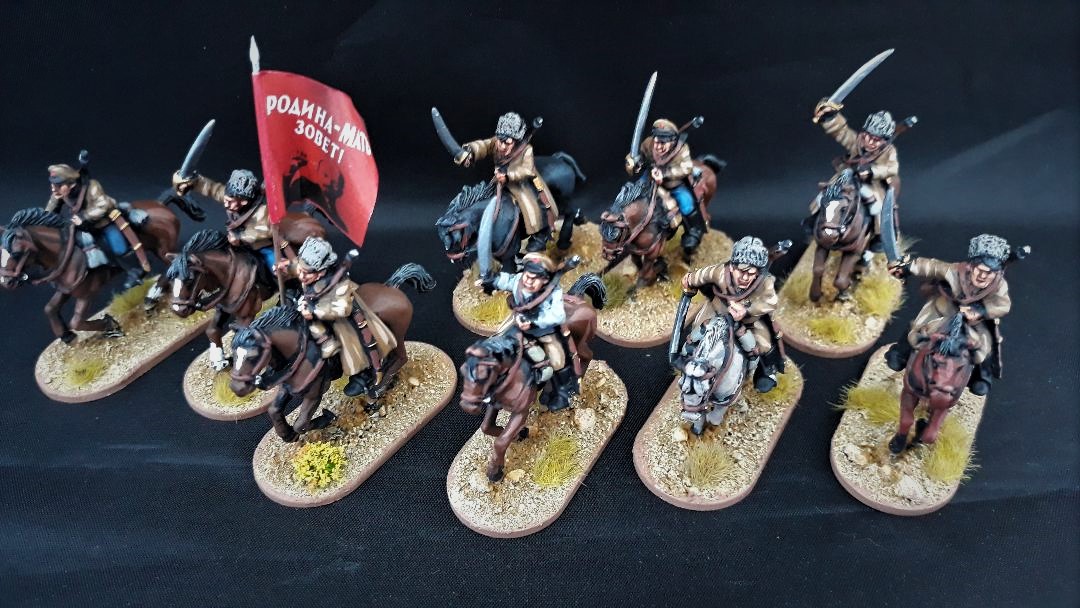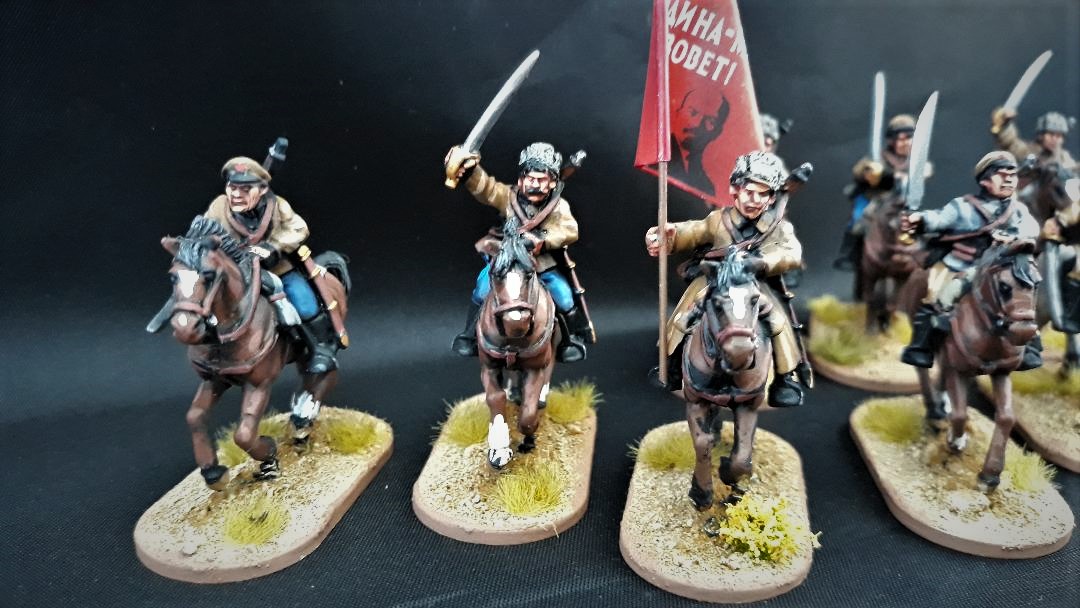Red Cavalry Squadron from the 1st Cavalry Army, also know as Budyonny's Cavalry Army
This army played an important role in winning the Civil War for the Bolsheviks, driving the White General Anton Denikin back from his advance towards Moscow. In 1920 Budyonny's Cavalry Army took part in the defence from Poland during the Polish-Bolshevik War, at first with remarkable success. The 1st Cavalry Army pushed Polish forces out of Ukraine and broke through Polish southern frontlines, but later was bogged down at Lvov. This in turn led to a heavy defeat of the rest of the Bolshevik forces in the Battle of Warsaw. When Budyonny's Cavalry finally joined the battle it was also soundly defeated in the Battle of Komarów, known as the last great cavalry battle in history. At this point, the 1st Cavalry Army's morale and discipline were at a low point and robbery and violence against the civilian population became commonplace. The 1st Cavalry Army also became known for periodic outbreaks of murderous anti-semitism.

The remains of the 1st Cavalry Army were sent south to fight Wrangel’s White forces in Ukraine and the Crimea. In May 1921 the 1st Cavalry Army was moved to North Caucasus. This movement was the basis of myth about the invincible 1st Cavalry Army, which has been cultivated by Soviet propaganda. On 4 May, its field headquarters was used to form the headquarters of the North Caucasus Military District (2nd formation). However, troops remained subordinated to the army staff until its dissolution on 11 October 1923.

The march of the 1st Cavalry Army became popular after the Russian Civil War and was celebrated in a song, We are the Red Cavalry (Russian: Мы красная кавалерия). Other titles of the song were "Мы красные кавалеристы" (We, Red cavalrymen) and "[Марш Буденного]" (Budenny march), and "Марш красных конников" (March of the Red horsemen). In commemoration, a monument to the 1st Cavalry Army was constructed in Lvov oblast, Ukraine.

Text courtesy of:
https://en.wikipedia.org/wiki/1st_Cavalry_Army